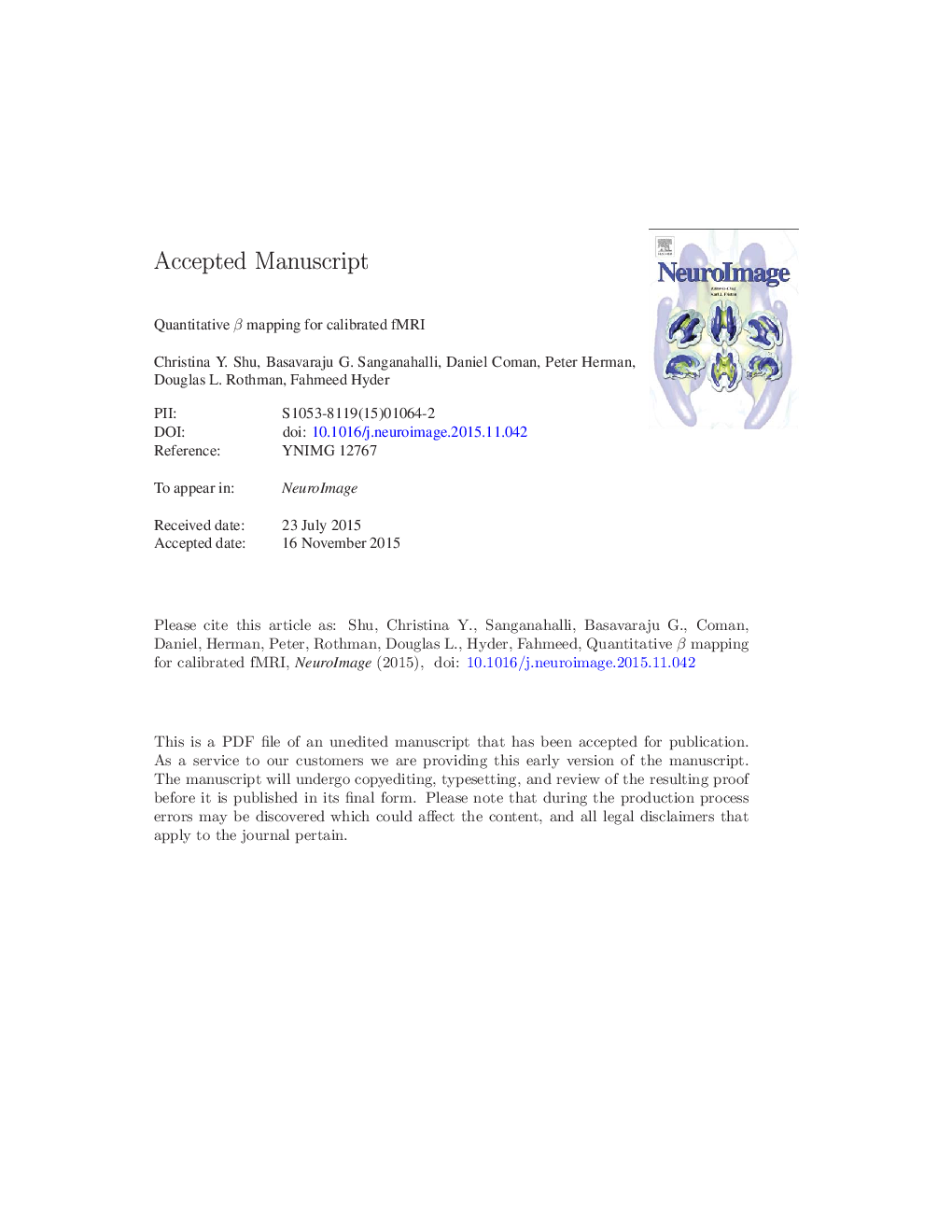| Article ID | Journal | Published Year | Pages | File Type |
|---|---|---|---|---|
| 6023915 | NeuroImage | 2016 | 34 Pages |
Abstract
The metabolic and hemodynamic dependencies of the blood oxygenation level-dependent (BOLD) signal form the basis for calibrated fMRI, where the focus is on oxidative energy demanded by neural activity. An important part of calibrated fMRI is the power-law relationship between the BOLD signal and the deoxyhemoglobin concentration, which in turn is related to the ratio between oxidative demand (CMRO2) and blood flow (CBF). The power-law dependence between BOLD signal and deoxyhemoglobin concentration is signified by a scaling exponent β. Until recently most studies assumed a β value of 1.5, which is based on numerical simulations of the extravascular BOLD component. Since the basal value of CMRO2 and CBF can vary from subject-to-subject and/or region-to-region, a method to independently measure β in vivo should improve the accuracy of calibrated fMRI results. We describe a new method for β mapping through characterizing R2Ⲡ- the most sensitive relaxation component of BOLD signal (i.e., the reversible magnetic susceptibility component that is predominantly of extravascular origin at high magnetic field) - as a function of intravascular magnetic susceptibility induced by an FDA-approved superparamagnetic contrast agent. In α-chloralose anesthetized rat brain, at 9.4 T, we measured β values of ~ 0.8 uniformly across large neocortical swathes, with lower magnitude and more heterogeneity in subcortical areas. Comparison of β maps in rats anesthetized with medetomidine and α-chloralose revealed that β is independent of neural activity levels at these resting states. We anticipate that this method for β mapping can help facilitate calibrated fMRI for clinical studies.
Related Topics
Life Sciences
Neuroscience
Cognitive Neuroscience
Authors
Christina Y. Shu, Basavaraju G. Sanganahalli, Daniel Coman, Peter Herman, Douglas L. Rothman, Fahmeed Hyder,
